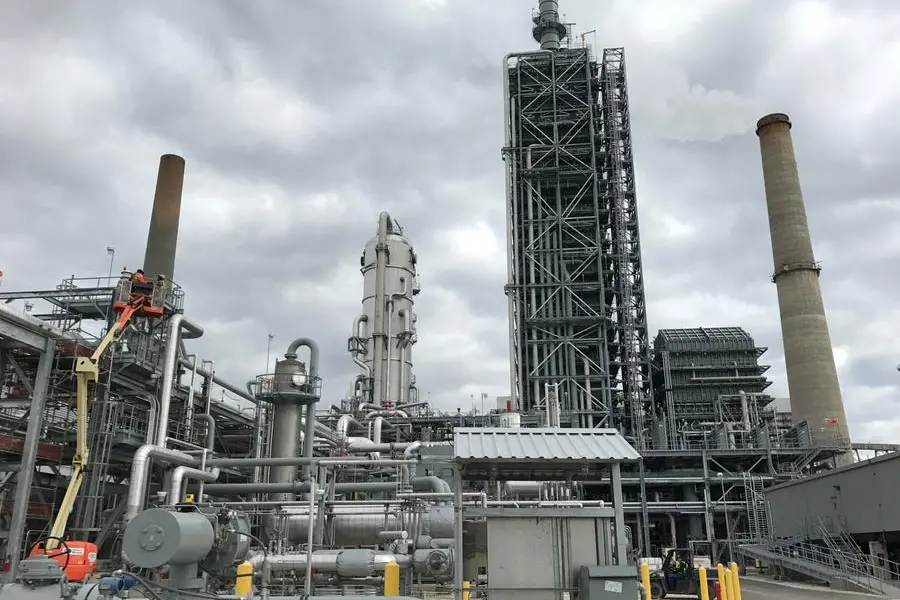PHOTO
The Biden administration's plan to decarbonize the U.S. power sector envisions the first-ever large-scale use of carbon capture and green hydrogen over the next decade - raising questions about whether the climate-fighting technologies can rise to the challenge.
The issue could emerge as a legal vulnerability for the plan, one of President Joe Biden’s biggest steps in his strategy to combat global warming, as fossil fuel companies and their representatives explore challenging it in court on the basis the technologies are unproven. A similar effort to clean up the power industry by the Obama White House in 2015 was hung up by legal challenges and ultimately repealed.
The Environmental Protection Agency's new proposal, announced on Thursday, sets carbon emissions standards for power plants that would push many to either install carbon capture equipment (CCS) that can siphon the CO2 from a plant’s smokestack, or use super-low-emissions hydrogen – made by electrolyzing water using renewable energy sources like solar and wind - as a fuel.
If it works, the plan would put the U.S. on track to reach net-zero emissions from the power sector – now responsible for a quarter of the nation’s greenhouse gases – by 2035, according to the White House.
But industry representatives are pushing back hard.
“The proposal raises a number of critical legal questions, including whether EPA has the authority to force the use of technologies that are not economically or technically feasible for widespread use,” said Michelle Bloodworth, president and CEO of America’s Power, which represents utilities that burn coal.
Jeff Holmstead, a lobbyist at Houston-based Bracewell LLC who formerly ran the EPA’s air office during the Bush administration, said betting on carbon capture is risky.
“There isn’t a single commercial-scale gas-fired power plant anywhere in the U.S. — or as far as I know, anywhere in the world — that uses CCS to control its emissions,” he said. "This fact alone could make it hard for EPA to convince the courts that CCS has been adequately demonstrated."
EPA officials and some environmental groups say the rule was designed to withstand legal challenges because it focuses on available technologies that can be applied directly at power plants, and because Congress affirmed the agency's authority to impose technology-based carbon standards.
They add that the Inflation Reduction Act, Biden's centerpiece climate legislation, offers billions in new tax credits and incentives that make CCS and clean hydrogen economically feasible.
“As I’ve understood it, the main issue with scaling has long been economic and the economics have changed,” said Michael Burger, the executive director of Columbia Law Schools’ Sabin Center for Climate Change Law.
Big utility companies, including Southern Company, CenterPoint Energy Inc, declined to comment on the feasibility of the technologies. The Edison Electric Institute, which represents the U.S. utility industry, said it was assessing the plan.
SPOTTY RECORD
In its 651-page proposal, the EPA makes the case for why it considers CCS to be "adequately demonstrated", pointing to several examples of such projects deployed at power plants and industrial facilities in North America.
It cited SaskPower's Boundary Dam project in Canada as one that has demonstrated CO2 capture rates of 90% on an existing coal steam generating unit.
And it namechecked NET Power, which has a Texas project that would capture nearly all emissions from gas-fired power starting in 2026.
The most high-profile examples to date, however, have shown problems.
A $1 billion project to harness CO2 emissions from a Texas coal plant, called Petra Nova – the first commercial-scale CCS project of its kind in the U.S. - suffered chronic mechanical problems and routinely missed its targets before it was shut down in 2020, according to a report submitted by the project’s owners to the U.S. Department of Energy. The owner, Japan’s JX Nippon Oil & Gas Exploration, is hoping to restart it in June.
The roughly one dozen existing active CCS projects in the U.S. are tiny, with a combined capacity to store around half a percent of national emissions, according to the Global CCS Institute, which tracks the industry.
Jay Duffy, litigation director of the Clean Air Task Force, said the fact the technology is not yet widely used should not pose a problem. He said when the EPA issued new air pollution controls for power plants in the 1970s, it designed them based on the availability of scrubbers that were not yet widely used.
"The Clean Air Act contemplates standards based on pollution controls that are available. They sit on shelves collecting dust until some new standard pushes them along," he said.
(Additional reporting by Clark Mindock and Scott DiSavino in New York; writing by Richard Valdmanis Editing by Marguerita Choy)





















